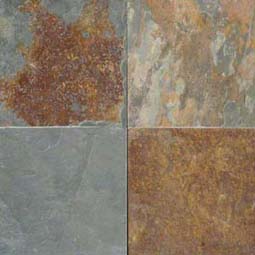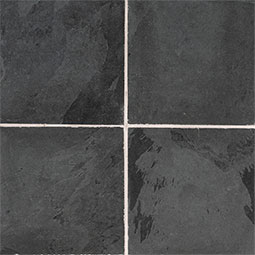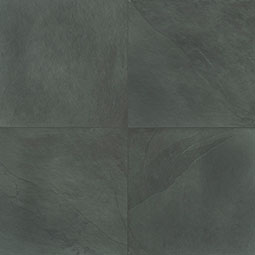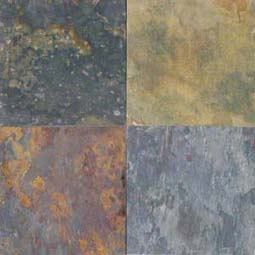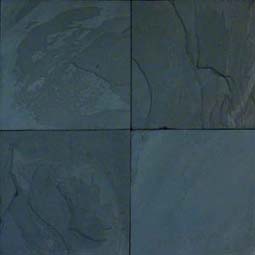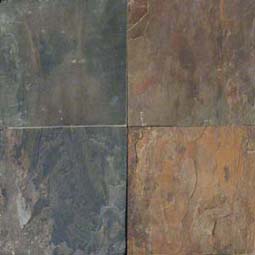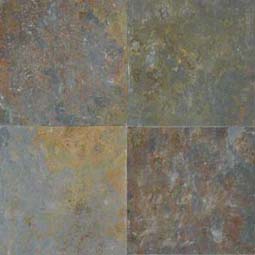Slate Tile
The vibrant colors and unique texture makes slate tile an exceptional interior flooring alternative. Slate is formed of compressed layers of sediments formed under the ocean. It’s tough composition ma ...
Read MoreHELPFUL TIPS ABOUT SLATE TILE
Benefits of Using Slate Tile
Slate tile offers many benefits and is an excellent choice for various flooring projects due to its impressive variety of colors. It is available in a broad spectrum of hues, ranging from rich earthy tones like browns, greens, and grays to vibrant shades of red and purple. This extensive color palette allows homeowners and designers to achieve the perfect aesthetic for any space. In addition to its aesthetic versatility, slate tile is ideal for various applications such as pool decks, kitchen floors, and bathrooms. Slate can withstand heavy foot traffic and exposure to moisture without losing its integrity or beauty. With proper installation and maintenance, slate tiles can last for decades, providing a cost-effective and low-maintenance solution for indoor and outdoor flooring projects.
How Long Do Slate Tiles Last?
Slate tile flooring is known for its exceptional durability and longevity. As a natural stone material, slate is inherently strong and resistant to cracks, scratches, chips, and breaks. When properly installed and maintained with regular sealing, a slate tile floor can easily last 100 years or more, making it one of the longest-lasting flooring options. While slate flooring does require some maintenance, such as periodic sealing and careful cleaning, its ability to withstand heavy foot traffic and retain its beauty for decades makes it a worthwhile investment.
Are Slate Tiles Durable?
Slate tile flooring is renowned for its exceptional durability and longevity, making it a popular choice for residential and commercial spaces. Slate is a natural stone material with inherent strength and resilience, allowing it to withstand heavy foot traffic, scratches, chips, and cracks. Its low porosity also contributes to its durability, rendering it resistant to water damage, stains, and even chemical spills.
Is Slate Tile Slippery When Wet?
Slate tile is known for its excellent slip resistance, even when wet, making it a safe and suitable flooring option for areas prone to moisture. Slate's natural cleft and texture, created during the splitting process, provide a slightly uneven surface that offers reliable traction and grip. This inherent roughness helps to channel water away from the top of the tile, further enhancing its slip resistance. Additionally, slate's low porosity and natural properties make it less susceptible to the growth of moss and algae, which can often lead to slippery and potentially hazardous surfaces on other materials.
While slate tile is naturally slip-resistant, additional measures can enhance its safety further. Applying a non-slip sealer or finish to the surface of the slate can provide an extra layer of protection against slips and falls.
Can Slate Tiles Be Used in a Shower?
Slate tiles are an excellent choice for use in showers and wet rooms. With its durability, slip resistance, proper installation and sealing to protect the surface, slate tiles are a practical and stylish solution for shower and wet room applications.
Do Slate Tiles Crack Easily?
Slate tiles are known for their durability and resistance to cracking thanks to their high flexural strength and natural composition. Slate tiles are unlikely to break or crack under normal usage conditions when installed in a reasonable thickness. The inherent strength of slate comes from its formation process, which involves layers of sedimentary rock being compressed and metamorphosed over millions of years. This process creates a dense, strong material that can withstand significant pressure and stress without cracking or breaking. As a result, slate tiles are an excellent choice for flooring and wall applications where durability and longevity are essential factors.
Should Slate Tile Be Sealed Before Installation?
While there are differing opinions on whether to seal slate tiles before installation, most professionals recommend applying a sealer until after the tiles have been installed. Sealing the front and back of the tiles before installation could interfere with the adherence of the thinset mortar and grout, compromising the integrity of the installation. By waiting to seal the slate until after the tiles have been installed and grouted, you can ensure that the sealer will protect the surface of the tiles without causing any issues with the installation process. This approach allows the slate to bond correctly with the substrate and grout while protecting against stains, moisture, and wear.
What Type of Thinset Should Be Used to Install Slate Tile?
When installing slate tiles, it is recommended to use a standard thinset mortar, which effectively fills in any unevenness on the back of the tiles, ensuring a strong bond and level surface. For optimal results, professionals suggest "back buttering" each tile with thinset and applying the mortar to the substrate. This technique involves spreading a thin layer of thinset on the back of each tile before placing it on the mortar bed, helping to achieve a more even distribution of the adhesive and improved contact between the tile and substrate. Using a standard thinset mortar and the back buttering method can ensure a successful and long-lasting slate tile installation.
How Do You Clean and Maintain Slate Tile Floors?
Sweep or vacuum slate floors regularly to remove dirt and debris. Damp mop with a pH-neutral cleaner made for natural stone as needed. Avoid acidic cleaners or abrasive scrubbing. Seal the slate every 1-2 years to prevent stains, etching, and other damage while enhancing the natural beauty of the slate. Sealing will also make ongoing maintenance easier. Establish a regular cleaning and maintenance routine to keep your slate tile floors looking their best. Sweep or vacuum the floors frequently to remove loose dirt, dust, and debris. When necessary, damp mop the slate tiles using a pH-neutral cleaner specifically designed for natural stone surfaces, as acidic or abrasive cleaners can damage the slate. Avoid using harsh scrubbing pads or brushes that may scratch the tile surface.
How Long Does It Take Slate Tile to Dry After Sealing it?
After applying a sealer to slate tile, the surface will typically be dry to the touch within approximately 4 hours. However, providing 24 hours for the sealer to cure completely is important before subjecting the tile to foot traffic or placing furniture on the sealed surface. This curing time ensures that the sealer has fully penetrated the slate and has formed a durable, protective layer that will effectively resist stains, moisture, and wear. By allowing the sealer to cure properly, you can maximize the protection and longevity of your slate tile installation.




